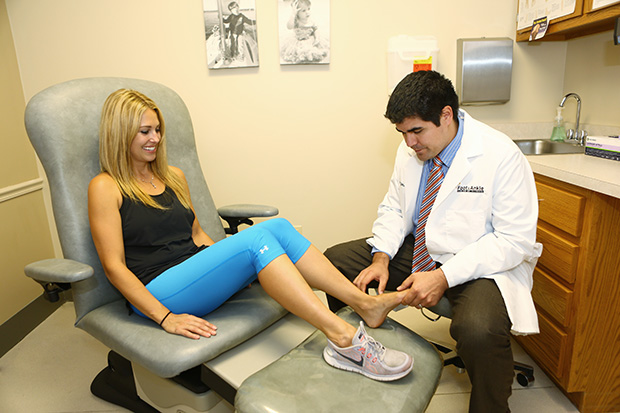By Grant Gonzalez, DPM
The digital revolution is expanding its impact on our lives every minute. Mobile smart phones, wireless internet networks, biometric authentication devices, virtual personal assistants, wristband gadgets, and virtual reality devices are here today and often gone tomorrow as new technology redefines our future lifestyle opportunities and business models.
This revolution has had a profound impact on the health sector. The emergence of electronic health records (EHR) allows a wide range of health data to be stored and shared. Patient portals provide patients with immediate access to their records. Other new medical device accessories can be attached to a smart phone to provide EKG readings. Individuals can immediately access data or have it transmitted to a health provider. Real-time biosensors are also being integrated into clothing apparel to analyze body function and performance. Experts predict that medical devices will one day be implemented in our body for continuous monitoring. Overall, these advancements are significantly improving the coordination and quality of care.
Patients are becoming “digitally engaged” as they incorporate new smart phone, fitness wristbands, or clips (like Fitbit and Jawbone), into their daily routines to track activity, exercise, food, weight, and sleep.
According to a recent article published by Fitbit, “Fitbit Profile and Update,” consumers are getting more involved in their health decisions. Digital technology enables them to take better control and manage their health and outcomes. Fitness trackers are gaining popularity and being incorporated into wellness programs and personalized coaching programs. There are over 23 million active Fitbit users. Users are becoming more social and creating social networks and virtual fitness groups.
As reconstructive foot and ankle surgeons, we subscribe to this view; however, we encourage patients to start smart by starting small!
Don’t rush into fitness. A modified approach will help you avoid injuries like shin splints and plantar fasciitis (heel pain). A steady, gradual program is more beneficial in the long run than an intense program that puts undue stress on your feet. Avoid running on uneven surfaces and terrain, at least during initial stages of your fitness regimen. Incorporate cross training into your fitness program to reduce stress on your feet.
According to John Sigle, DPM, “Fitness activities can take a toll on your feet when you begin workouts, so don’t be surprised if you experience some aches and pains when you wake up in the morning. If the aches and pain persist as you progress in your workouts, it is a signal that you should consult with your podiatrist for a diagnosis and treatment to prevent further injury.” Ignoring aches and pains may result in more serious injury and delay your fitness activities.
The majority of foot and ankle problems can be treated conservatively and resolved with simple adjustments like changing shoes and socks, or using shoe inserts and pads. Minor adjustments will help prevent blisters, corns, and calluses and help relieve any aches and pains you may feel in your legs, knees, and hips.
Proper foot hygiene is essential to avoid problems. Trim your toenails properly and regularly. Keep your feet clean and dry and inspect them on a regular basis. Foot blisters; nerve-compression foot injuries; and stress fractures of the lower leg, foot, and ankle should be examined by a podiatrist. This includes foot infections, ingrown toenails, and toenail fungus. People should consult with their physician or podiatrist prior to engaging in a vigorous exercise program if they are overweight or obese or have diabetes, peripheral neuropathy, or peripheral artery disease.
Most health care practitioners are in favor of engaging in an exercise conditioning program one or two months prior to beginning a strenuous physical fitness program. To get the most out of your exercise program, it’s essential to prepare your feet properly for training so they will carry you where you need to go.
Consult with your podiatrist about exercises that will help condition your feet and lower extremities to prevent injury.
This new year you can make a difference in the quality of your life if you have a solid foundation to support your movements! Don’t be afraid to incorporate smart devices into your workouts to improve your health. Start out slow and start out smart.
Schedule a consultation with your podiatrist if you are experiencing foot or ankle pain that hinders your ability to exercise. Get a proper foot screening to determine if you are at risk.
Contact the Foot & Ankle Center of Illinois at 217-2700 if you are seeking a board-certified podiatrist to start off the new year with healthy feet. Visit myfootandanklecenter.com for more information on foot care. The Foot & Ankle Center of Illinois is conveniently located in Springfield, Decatur, Taylorville, Shelbyville, Sullivan, and Carlinville.

